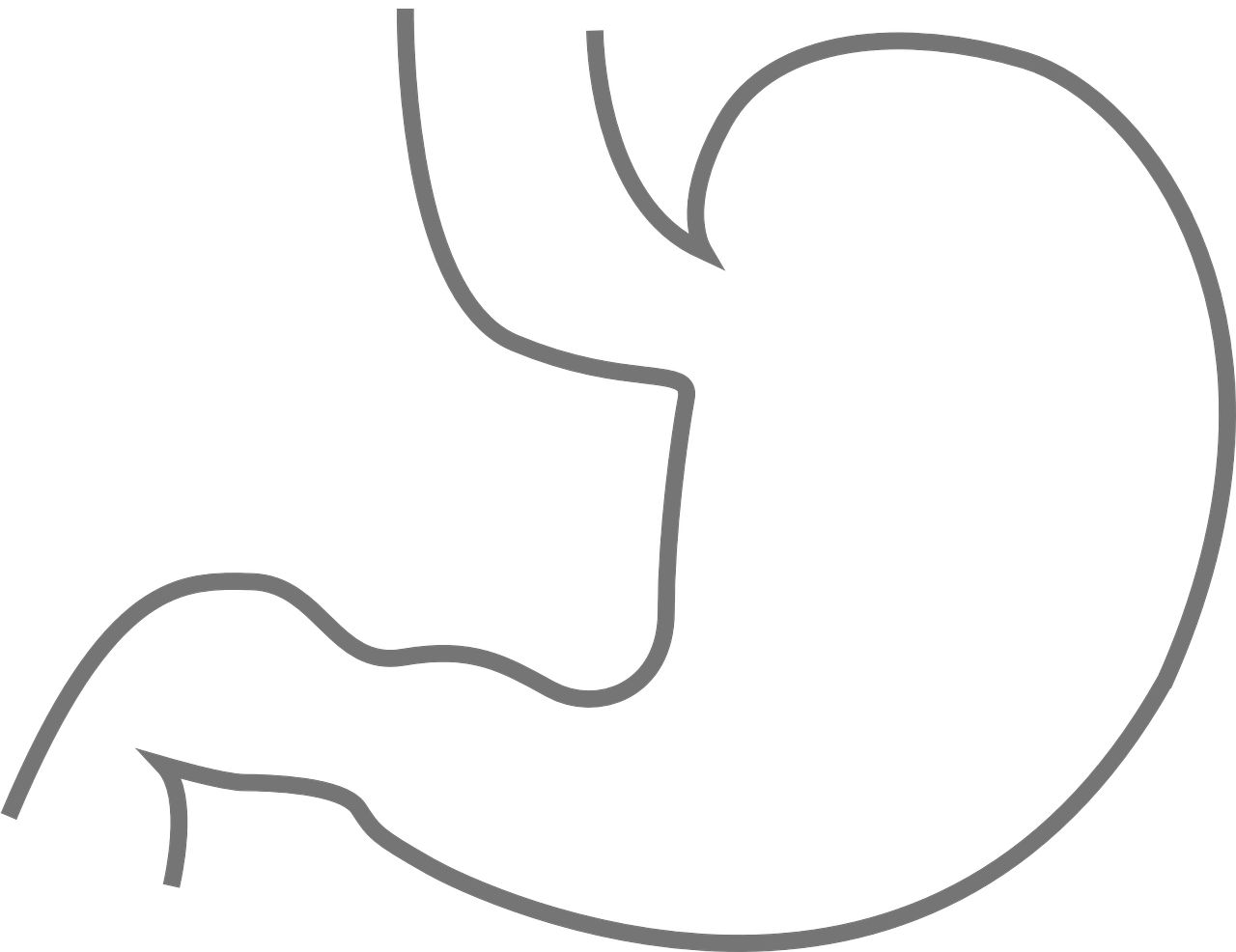Table of Contents
- In the intricate world of nutrition, there’s one component that stands tall as the unsung hero of digestive health
- Understanding Dietary Fiber
- Soluble Fiber
- Insoluble Fiber
- Promoting Regularity
- Preventing Diverticulitis
- Managing Weight
- Balancing Blood Sugar
- Lowering Cholesterol
- Supporting Gut Health
- Incorporating Fiber-Rich Foods into Your Diet
- Whole Grains
- Fruits and Vegetables
- Legumes
- Nuts and Seeds
- High-Fiber Cereals
- Smoothies
- Read Food Labels
- Stay Hydrated
In the intricate world of nutrition, there’s one component that stands tall as the unsung hero of digestive health
dietary fiber. Often overlooked but critically important, fiber plays a foundational role in maintaining a healthy digestive system. In this article, we’ll delve into the significance of fiber-rich foods and why they should be at the heart of your dietary choices for a robust digestive system.
Dietary fiber, despite often being overlooked, is undeniably crucial for our overall health, with its impact extending far beyond what meets the eye. It plays a foundational role in maintaining a healthy digestive system and it’s time we recognize its significance in our daily dietary choices.
At the core of its importance lies its ability to support digestion. Fiber acts as nature’s broom, helping to sweep away waste and toxins from our digestive tract. Without an adequate intake of fiber, our digestive system can become sluggish, potentially leading to issues like constipation or irregular bowel movements. Incorporating fiber-rich foods into our diet is akin to giving our digestive system the tools it needs to function optimally.
But the benefits of dietary fiber don’t stop there. It also contributes to a feeling of fullness and satiety, which can be a valuable asset for those looking to manage their weight or make healthier food choices. When we consume fiber-rich foods, we’re less likely to overindulge in less nutritious options, ultimately aiding in weight management and promoting healthier eating habits.
Moreover, fiber plays a role in stabilizing blood sugar levels. By slowing down the absorption of sugars, it helps prevent rapid spikes and crashes in energy, promoting a more balanced and sustained source of vitality throughout the day. This can be especially beneficial for individuals with diabetes or those at risk of developing the condition.
Furthermore, a diet rich in fiber has been linked to lower cholesterol levels and a reduced risk of heart disease. Soluble fiber, in particular, can help bind to cholesterol molecules, escorting them out of the body and reducing the risk of plaque buildup in arteries.
In our fast-paced modern lives, where processed foods often take center stage, it’s easy to neglect the power of fiber-rich foods. However, by consciously including them in our diets, we not only support our digestive health but also promote overall well-being. Fiber-rich foods, including fruits, vegetables, whole grains, legumes and nuts, should indeed take a prominent place in our daily meals. They serve as a reminder that sometimes the most significant impact on our health comes from the simplest of dietary choices. So, let’s celebrate the humble fiber and make it a star in our dietary repertoire for a robust and resilient digestive system and a healthier, happier life.
To expand your knowledge on this subject, make sure to read on at this location: Wellness + Medical Tips Archives – CF Nutrition

Understanding Dietary Fiber
Dietary fiber, also known simply as fiber, is a type of carbohydrate found in plant-based foods that cannot be digested by the human body. Instead, it passes through the digestive tract largely intact, providing a host of benefits along the way. There are two main types of dietary fiber:
Dietary fiber, often referred to simply as fiber, plays a pivotal role in our diet and it’s much more than just a non-digestible carbohydrate. This essential component, derived from a variety of plant-based foods, embarks on a remarkable journey through our digestive tract, bringing with it a plethora of health advantages.
There are two primary types of dietary fiber:
Soluble Fiber: This type of fiber dissolves in water, forming a gel-like substance in your digestive system. It’s a versatile teammate, known for its ability to help regulate blood sugar levels, lower cholesterol and maintain a healthy gut. Foods rich in soluble fiber, like oats, beans and fruits, can be your allies in managing blood sugar spikes and keeping your heart in peak condition.
Insoluble Fiber: Unlike its soluble counterpart, insoluble fiber doesn’t dissolve in water. Instead, it adds bulk to your stool, promoting regular and efficient bowel movements. Think of it as the broom of your digestive system, sweeping away waste and toxins and preventing constipation. Whole grains, vegetables and nuts are excellent sources of insoluble fiber, ensuring your digestive health remains in top-notch shape.
The beauty of dietary fiber lies not only in its distinct roles but also in its versatility. By incorporating a variety of fiber-rich foods into your diet, you can strike a balance that addresses both soluble and insoluble fiber needs, reaping the full spectrum of benefits. From maintaining stable blood sugar levels to supporting heart health and aiding in digestion, fiber is an unsung hero in your journey toward a healthier, more balanced diet. So, make it a point to include fiber-rich foods in your daily meals and watch as they pave the way to improved well-being.
Explore this link for a more extensive examination of the topic: Healthy Eating — Peqish Medically Tailored Ready-to-Eat Foods …
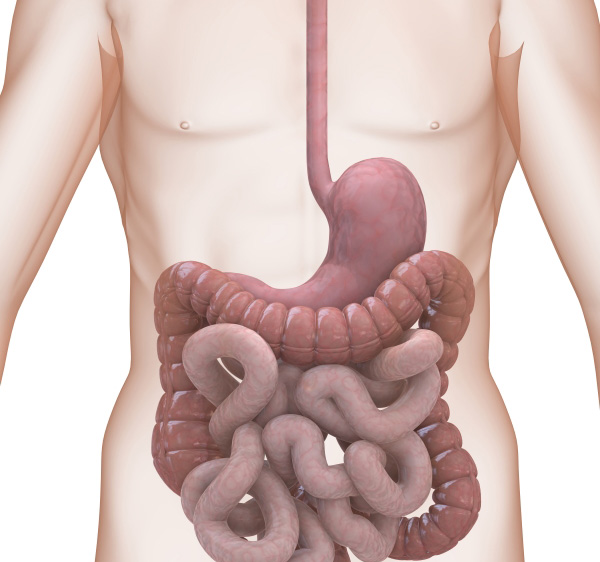
Soluble Fiber
This type of fiber dissolves in water and forms a gel-like substance in the digestive tract. It helps to slow down digestion, regulate blood sugar levels and lower cholesterol.
The soluble fiber found in foods is like a multi-talented team player in your body’s digestive system, offering several important benefits for your overall health and well-being:
Digestive Efficiency: Soluble fiber dissolves in water and forms a gel-like substance in your digestive tract. This unique quality helps to regulate the speed of digestion. By slowing down the process, it allows your body more time to absorb essential nutrients from the foods you consume.
Stabilizing Blood Sugar: One of the remarkable roles of soluble fiber is its ability to help regulate blood sugar levels. When you consume foods high in soluble fiber, they are digested more slowly, leading to a gradual and steady release of glucose into the bloodstream. This helps prevent rapid spikes and crashes in blood sugar, which is particularly beneficial for individuals with diabetes or those striving to maintain stable energy levels throughout the day.
Cholesterol Management: Soluble fiber is also known for its cholesterol-lowering properties. The gel-like substance formed by soluble fiber in the digestive tract acts as a sponge, trapping cholesterol molecules and preventing their absorption into the bloodstream. This process can lead to reduced levels of LDL (low-density lipoprotein) cholesterol, often referred to as “bad” cholesterol, helping to maintain a healthier cardiovascular system.
Feeling Full and Satiety: Consuming foods rich in soluble fiber can contribute to a feeling of fullness and satiety. This sensation can aid in portion control and appetite regulation, making it a valuable tool for those aiming to manage their weight or make healthier food choices.
Improved Gut Health: Soluble fiber serves as a prebiotic, providing nourishment for the beneficial bacteria residing in your gut. A healthy gut microbiome is associated with improved digestion, immune function and even mood regulation. By supporting the growth of these friendly microbes, soluble fiber contributes to your overall gut health.
Constipation Relief: Soluble fiber can help soften and add bulk to stools, making bowel movements easier to pass. This can be particularly helpful in preventing or alleviating constipation, a common digestive issue.
Lowering the Risk of Certain Diseases: Regular consumption of soluble fiber has been associated with a reduced risk of various chronic diseases, including heart disease, type 2 diabetes and certain types of cancer. This highlights its role in promoting long-term health and well-being.
Diverse Dietary Sources: Soluble fiber can be found in a wide range of foods, including oats, beans, lentils, fruits like apples and citrus, vegetables like carrots and sweet potatoes and even certain seeds like chia and flaxseeds. This diversity allows for plenty of options to incorporate soluble fiber into your daily meals.
Incorporating soluble fiber-rich foods into your diet can have a significant impact on your overall health and vitality. Whether you’re aiming to manage your weight, stabilize your blood sugar or promote heart health, the gel-like properties of soluble fiber make it a valuable ally in achieving these health goals.
For a comprehensive look at this subject, we invite you to read more on this dedicated page: Lifestyle Changes: Effect of Diet, Exercise, Functional Food, and …

Insoluble Fiber
Insoluble fiber does not dissolve in water and adds bulk to the stool. It aids in promoting regular bowel movements and preventing constipation.
Insoluble fiber is an unsung hero of digestive health. Unlike its soluble counterpart, insoluble fiber does not dissolve in water, but its role in our well-being is just as vital. One of its primary functions is to add bulk to the stool, which may not sound glamorous, but it’s a crucial step in maintaining a healthy digestive system.
When insoluble fiber interacts with the digestive process, it absorbs water and swells, creating soft and bulky stools. This transformation aids in promoting regular bowel movements, ensuring that waste moves through the intestinal tract efficiently. By preventing stool from becoming too compacted or sluggish, insoluble fiber plays a significant role in preventing constipation, a common discomfort that can lead to various digestive issues.
Beyond its role in regularity, insoluble fiber contributes to the overall health of the digestive system. It acts like a gentle broom, helping to sweep waste and toxins from the intestines, thus promoting a cleaner and healthier gut environment. This cleansing effect may also reduce the risk of certain gastrointestinal conditions and support a well-balanced gut microbiome.
Moreover, insoluble fiber can be particularly beneficial for individuals who struggle with diverticulosis, a condition where small pouches form in the colon wall, leading to inflammation and discomfort. Insoluble fiber’s ability to add bulk to stools can help prevent these pouches from becoming blocked and inflamed, reducing the risk of diverticulitis, a more serious complication.
To harness the benefits of insoluble fiber, it’s essential to incorporate it into your diet. You can find this type of fiber in foods like whole grains, vegetables and fruits, especially in their skins or peels. By making these dietary choices, you not only support regularity and digestive health but also contribute to your overall well-being. So, while insoluble fiber may not dissolve in water, it certainly dissolves the discomfort of digestive issues and sets the stage for a healthier, happier gut.
Should you desire more in-depth information, it’s available for your perusal on this page: Lifestyle Changes: Effect of Diet, Exercise, Functional Food, and …

Promoting Regularity
One of the most well-known benefits of dietary fiber is its ability to prevent constipation by adding bulk and softness to the stool. This helps keep bowel movements regular and reduces the risk of gastrointestinal discomfort.
One of the most well-known benefits of dietary fiber is its ability to prevent constipation by adding bulk and softness to the stool. This helps keep bowel movements regular and reduces the risk of gastrointestinal discomfort.
However, the advantages of dietary fiber extend far beyond just relieving constipation. Fiber plays a multifaceted role in supporting overall digestive health. It acts as nature’s broom, sweeping through your digestive tract and promoting a clean and efficient system. Here’s how:
Preventing Diverticular Disease: A high-fiber diet can help prevent diverticulosis and its more serious form, diverticulitis. Diverticulosis occurs when small pouches form in the colon wall, while diverticulitis is the inflammation of these pouches. Fiber helps by maintaining healthy bowel movements and reducing pressure in the colon, lowering the risk of pouch formation and inflammation.
Managing Weight: Fiber-rich foods tend to be filling and low in calories. They can help you feel satisfied with fewer calories, making it easier to manage your weight. Additionally, fiber slows down the digestion of carbohydrates, helping to stabilize blood sugar levels and reduce cravings for sugary snacks.
Lowering Cholesterol: Soluble fiber, found in foods like oats, beans and fruits, can help lower cholesterol levels. It does this by binding to cholesterol molecules and removing them from the body, contributing to heart health.
Maintaining Gut Microbiota: Fiber serves as a prebiotic, providing nourishment to the beneficial bacteria in your gut. A healthy gut microbiome is associated with improved digestion, a stronger immune system and even better mood regulation.
Reducing the Risk of Colon Cancer: High-fiber diets have been linked to a reduced risk of colon cancer. Fiber helps keep the colon environment healthy, prevents the buildup of harmful substances and supports regular bowel movements, all of which contribute to lower cancer risk.
Balancing Hormones: Fiber can help regulate hormone levels, particularly in women. For example, it may reduce the risk of estrogen-related conditions like breast cancer and polycystic ovary syndrome (PCOS).
Incorporating fiber-rich foods into your diet is a small but impactful step towards maintaining not only regular bowel movements but also overall digestive wellness and better health. It’s a simple dietary adjustment with a multitude of benefits that go well beyond the restroom, promoting a happier, healthier you. So, consider adding more fiber to your plate and enjoy the far-reaching advantages it offers for your well-being.
Additionally, you can find further information on this topic by visiting this page: The prevention and control the type-2 diabetes by changing lifestyle …

Preventing Diverticulitis
A diet high in fiber-rich foods can reduce the risk of diverticulitis, a condition characterized by the inflammation of pouches that can form in the walls of the colon. Fiber prevents these pouches from becoming blocked or infected.
A diet rich in fiber is akin to an insurance policy for your digestive health, offering a protective shield against conditions like diverticulitis. This ailment, marked by the inflammation of pouches that may develop in the colon’s walls, can be a painful and debilitating experience. Fortunately, fiber emerges as a hero in this narrative, actively warding off the risk of diverticulitis and ensuring your colon’s well-being.
The pouches, known as diverticula, can form when weak spots in the colon’s muscular wall allow small pockets to protrude. If these pouches become blocked by waste or infected, it can lead to diverticulitis, a condition often accompanied by symptoms like abdominal pain, bloating, fever and changes in bowel habits.
However, fiber steps in as a preventive force. This indigestible component of plant-based foods adds bulk and softness to your stool. As a result, it promotes regular bowel movements, preventing constipation and ensuring that waste moves smoothly through your colon. In the context of diverticulitis, this is crucial because it minimizes the chances of waste becoming trapped in the diverticula and causing inflammation or infection.
Fiber acts as nature’s broom, sweeping away the risk factors that could lead to diverticulitis. By ensuring that your stools remain soft and easily passable, it helps maintain the integrity of your colon’s walls, reducing the likelihood of diverticula formation.
To embrace the protective power of fiber, consider incorporating a variety of fiber-rich foods into your diet. Whole grains, legumes, fruits, vegetables and nuts are all excellent sources of dietary fiber. By building your meals around these wholesome choices, you not only reduce the risk of diverticulitis but also lay a foundation for overall digestive health.
In essence, fiber is your ally in the battle against diverticulitis, offering a simple yet effective means of safeguarding your colon’s well-being. It’s a reminder that what you eat plays a significant role in your health and by choosing foods that promote digestive regularity, you empower your body to defend itself against potential health challenges like diverticulitis. So, let fiber be your armor and fortify your diet with its protective embrace.
For additional details, consider exploring the related content available here Diet Changes That Help Your Colon: Michael H Tarlowe MD …
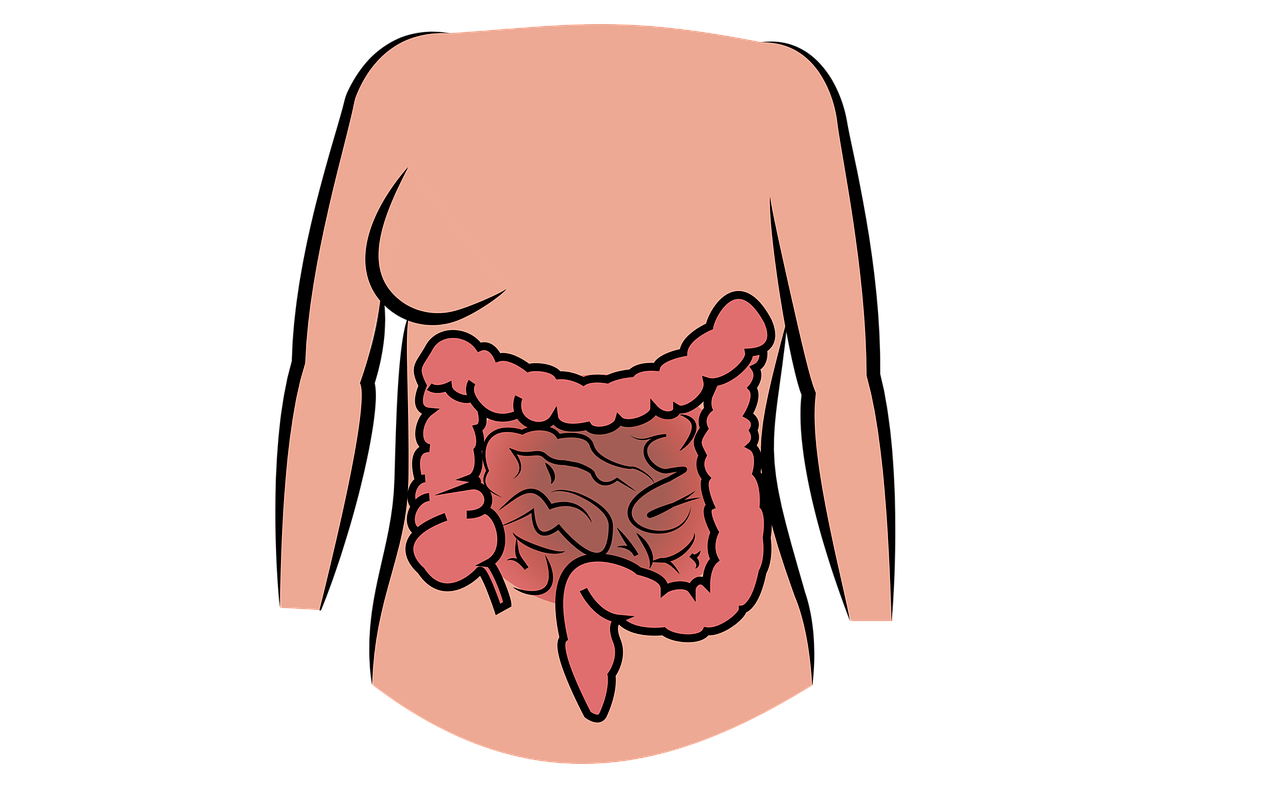
Managing Weight
High-fiber foods are often lower in calories and can help control appetite by promoting a feeling of fullness. This can aid in weight management and reduce the likelihood of overeating.
High-fiber foods are nutritional powerhouses that offer a multitude of benefits beyond just weight management. Their ability to promote a sense of fullness is just one of the advantages they bring to the table.
1. Digestive Health: Fiber is like the janitor of our digestive system. It sweeps through our intestines, ensuring smooth and regular bowel movements. This not only helps prevent constipation but also reduces the risk of developing more serious conditions like diverticulitis and colorectal cancer.
2. Blood Sugar Control: High-fiber foods, particularly soluble fiber, can help regulate blood sugar levels. They slow down the absorption of sugar, preventing rapid spikes and crashes in blood glucose. This is particularly beneficial for individuals with diabetes or those at risk of developing the condition.
3. Heart Health: Fiber is a heart-healthy nutrient. It can help lower levels of bad cholesterol (LDL) by binding to it and aiding in its removal from the body. Lowering LDL cholesterol reduces the risk of heart disease and stroke.
4. Weight Loss and Maintenance: Beyond controlling appetite, fiber helps with weight loss and maintenance in other ways. It reduces the caloric density of meals, meaning you can eat more food with fewer calories. Additionally, it can help control cravings for sugary and high-calorie foods, making it easier to adhere to a healthy diet.
5. Gut Microbiome: High-fiber foods are a boon for the trillions of microorganisms living in our gut. They serve as a prebiotic, providing nourishment to beneficial gut bacteria. A healthy gut microbiome is associated with improved digestion, a stronger immune system and even mental health benefits.
6. Longevity: Studies suggest that a diet rich in fiber is associated with a longer lifespan. The reduced risk of chronic diseases and improved overall health contribute to a longer and more active life.
Incorporating high-fiber foods into your daily diet is a simple yet powerful way to enhance your well-being. Whole grains, legumes, fruits, vegetables, nuts and seeds are excellent sources of dietary fiber. By making these foods a regular part of your meals, you’re not only promoting weight management but also nurturing your body for long-term health and vitality. So, when it comes to nourishing your body, remember that fiber is a friend you’d want to keep close.
To expand your knowledge on this subject, make sure to read on at this location: The prevention and control the type-2 diabetes by changing lifestyle …

Balancing Blood Sugar
Soluble fiber can help regulate blood sugar levels by slowing down the absorption of sugar. This is particularly beneficial for individuals with diabetes or those at risk of developing the condition.
Soluble fiber, often referred to as the unsung hero of a healthy diet, plays a remarkable role in maintaining stable blood sugar levels. Its impact extends beyond diabetes management and prevention, offering a multitude of benefits for overall health:
1. Blood Sugar Regulation: Soluble fiber’s ability to slow down the absorption of sugar is a game-changer for individuals with diabetes. By forming a gel-like substance in the digestive tract, it acts as a natural barrier, preventing rapid spikes in blood sugar levels after meals. This helps those with diabetes manage their condition more effectively and reduces the need for medication.
2. Improved Insulin Sensitivity: Soluble fiber has been linked to improved insulin sensitivity, which is essential for individuals with type 2 diabetes or insulin resistance. Regular consumption of soluble fiber can enhance the body’s response to insulin, making it easier for cells to take up glucose from the bloodstream.
3. Sustained Energy: Soluble fiber’s gradual release of sugar into the bloodstream translates into sustained energy levels. It prevents the roller-coaster effect of blood sugar spikes and crashes, helping individuals maintain steady energy throughout the day. This benefit is appreciated not only by those with diabetes but also by anyone seeking to avoid energy slumps.
4. Heart Health: Soluble fiber is a heart-healthy nutrient. It can lower cholesterol levels by binding to cholesterol molecules in the digestive tract and promoting their elimination from the body. This, in turn, reduces the risk of heart disease, which is often associated with diabetes.
5. Weight Management: Soluble fiber aids in weight management by promoting a feeling of fullness and reducing overall calorie intake. When individuals feel satisfied after meals, they are less likely to engage in overeating or snack on unhealthy options. This can be particularly helpful for those working to achieve and maintain a healthy weight.
6. Digestive Health: Soluble fiber also supports digestive health. It adds bulk to stool, softening it and preventing constipation. A healthy digestive system is essential for overall well-being, as it ensures the efficient absorption of nutrients from the foods we eat.
7. Gut Microbiota: Soluble fiber serves as a prebiotic, nourishing beneficial gut bacteria. A balanced and diverse gut microbiome is associated with numerous health benefits, including improved immune function and a reduced risk of chronic diseases.
8. Versatile Sources: Soluble fiber can be found in a variety of foods, including oats, beans, lentils, fruits (such as apples, citrus fruits and berries), vegetables (like carrots and sweet potatoes) and psyllium husk. This means that incorporating soluble fiber into your diet is not only beneficial but also delicious and versatile.
In conclusion, soluble fiber is a dietary ally that offers much more than blood sugar regulation. Its broad spectrum of benefits includes heart health, weight management, digestive well-being and support for a healthy gut microbiome. By making conscious choices to include soluble fiber-rich foods in your diet, you not only protect against diabetes but also invest in your overall health and vitality.
You can also read more about this here: The prevention and control the type-2 diabetes by changing lifestyle …

Lowering Cholesterol
Certain soluble fibers, like beta-glucans found in oats and barley, can help lower LDL (bad) cholesterol levels. This is an essential step in reducing the risk of heart disease.
The role of soluble fibers, particularly beta-glucans found in wholesome foods like oats and barley, in promoting heart health cannot be overstated. These fibers offer a natural and effective way to combat the risk factors associated with heart disease, with a primary focus on reducing LDL (low-density lipoprotein) cholesterol levels. Let’s delve deeper into the significance of incorporating such soluble fibers into your diet as a crucial step in maintaining a healthy heart.
LDL Cholesterol Control: LDL cholesterol, often referred to as “bad” cholesterol, tends to accumulate in the arteries, forming plaques that can narrow and harden them—a condition known as atherosclerosis. This buildup of plaques increases the risk of heart disease and related complications. Soluble fibers, especially beta-glucans, act as dietary heroes by binding to LDL cholesterol in the digestive tract, preventing its absorption into the bloodstream. This means less LDL cholesterol circulating in the body and, ultimately, a lower risk of atherosclerosis.
Balancing Cholesterol Levels: The consumption of soluble fibers like beta-glucans can help balance the overall cholesterol profile by increasing the levels of HDL (high-density lipoprotein) cholesterol, often referred to as “good” cholesterol. HDL cholesterol scavenges excess cholesterol from the bloodstream and transports it to the liver for removal, further reducing the risk of cholesterol buildup in the arteries.
Blood Sugar Regulation: Soluble fibers not only help control cholesterol levels but also play a vital role in managing blood sugar. They slow down the digestion and absorption of carbohydrates, preventing rapid spikes in blood sugar levels. This glycemic control is particularly beneficial for individuals with diabetes or those at risk of developing the condition, as uncontrolled blood sugar can contribute to heart disease risk.
Weight Management: The inclusion of soluble fibers in the diet can aid in weight management, another critical aspect of heart health. These fibers create a sense of fullness and satiety, reducing overall calorie intake and helping to maintain a healthy body weight. Excess weight is a known risk factor for heart disease and maintaining a healthy weight can significantly lower this risk.
Inflammation Reduction: Chronic inflammation is increasingly recognized as a contributor to heart disease. Soluble fibers, through their influence on gut health and the microbiome, can help reduce inflammation in the body. This anti-inflammatory effect contributes to overall heart health by minimizing the factors that can lead to cardiovascular issues.
Incorporating foods rich in soluble fibers, such as oats and barley, into your diet is a proactive step in reducing the risk of heart disease. Whether through a comforting bowl of oatmeal for breakfast or a hearty barley soup for lunch, these fiber-rich foods offer both delicious and heart-protective options. Alongside other heart-healthy habits like regular exercise and a balanced diet, the inclusion of soluble fibers can be a significant contributor to a long and healthy life, free from the burdens of heart disease.
If you’d like to dive deeper into this subject, there’s more to discover on this page: How adding salads can improve older adults’ health.
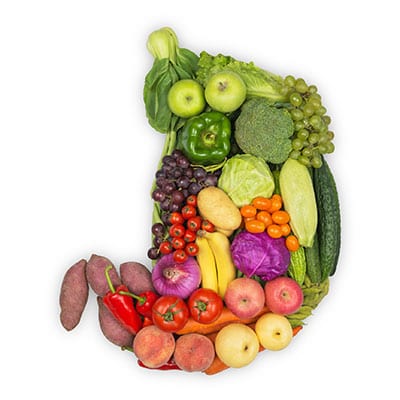
Supporting Gut Health
Fiber-rich foods act as a source of nourishment for beneficial gut bacteria. A healthy gut microbiome is associated with improved digestion and a stronger immune system.
Fiber-rich foods, often overlooked but incredibly important, serve as more than just sustenance for our bodies; they play a critical role in nurturing our gut microbiome, the bustling community of microorganisms residing in our digestive tract. This relationship between fiber and our gut’s tiny inhabitants is a cornerstone of our overall health and well-being.
Within our intestines, a diverse ecosystem of bacteria, fungi and other microorganisms thrives. These microorganisms aren’t freeloaders; they provide us with a wealth of benefits in return for their cozy accommodations and fiber is their favorite nourishment. Fiber, which comes in two main forms—soluble and insoluble—serves as a buffet for these beneficial gut bacteria.
Soluble fiber, found in foods like oats, beans and fruits, dissolves in water to form a gel-like substance in the gut. This substance not only helps to slow down digestion, which can stabilize blood sugar levels, but also serves as a feast for certain types of friendly bacteria. In return for this fiber feast, these bacteria produce short-chain fatty acids (SCFAs), which have a host of health benefits, including supporting our immune system and reducing inflammation.
Insoluble fiber, prevalent in foods like whole grains and vegetables, adds bulk to our stool and promotes regular bowel movements. While it may not be directly consumed by gut bacteria, its presence is crucial for maintaining a healthy, well-functioning digestive system.
Now, let’s explore the ripple effects of this symbiotic relationship between fiber-rich foods and our gut microbiome. A thriving and diverse gut microbiome is associated with improved digestion and absorption of nutrients, which means that when we consume fiber-rich foods, we maximize our body’s ability to extract essential nutrients from the foods we eat.
Additionally, a healthy gut microbiome doesn’t stop at digestion; it has far-reaching implications for our overall health. It plays a pivotal role in supporting our immune system, helping to ward off infections and illnesses. Furthermore, it contributes to the synthesis of vitamins and other essential compounds that our bodies need to function optimally.
In summary, fiber-rich foods are like the gourmet buffet for the beneficial bacteria in our gut. By consuming these foods, we not only support our digestive health but also promote a robust immune system and overall well-being. So, when you enjoy that delicious bowl of oatmeal or savor a hearty salad, remember that you’re not just nourishing yourself; you’re also fostering a thriving community of microorganisms that are working diligently behind the scenes to keep you healthy and strong.
You can also read more about this here: Improve Your Digestive Health – MD365®
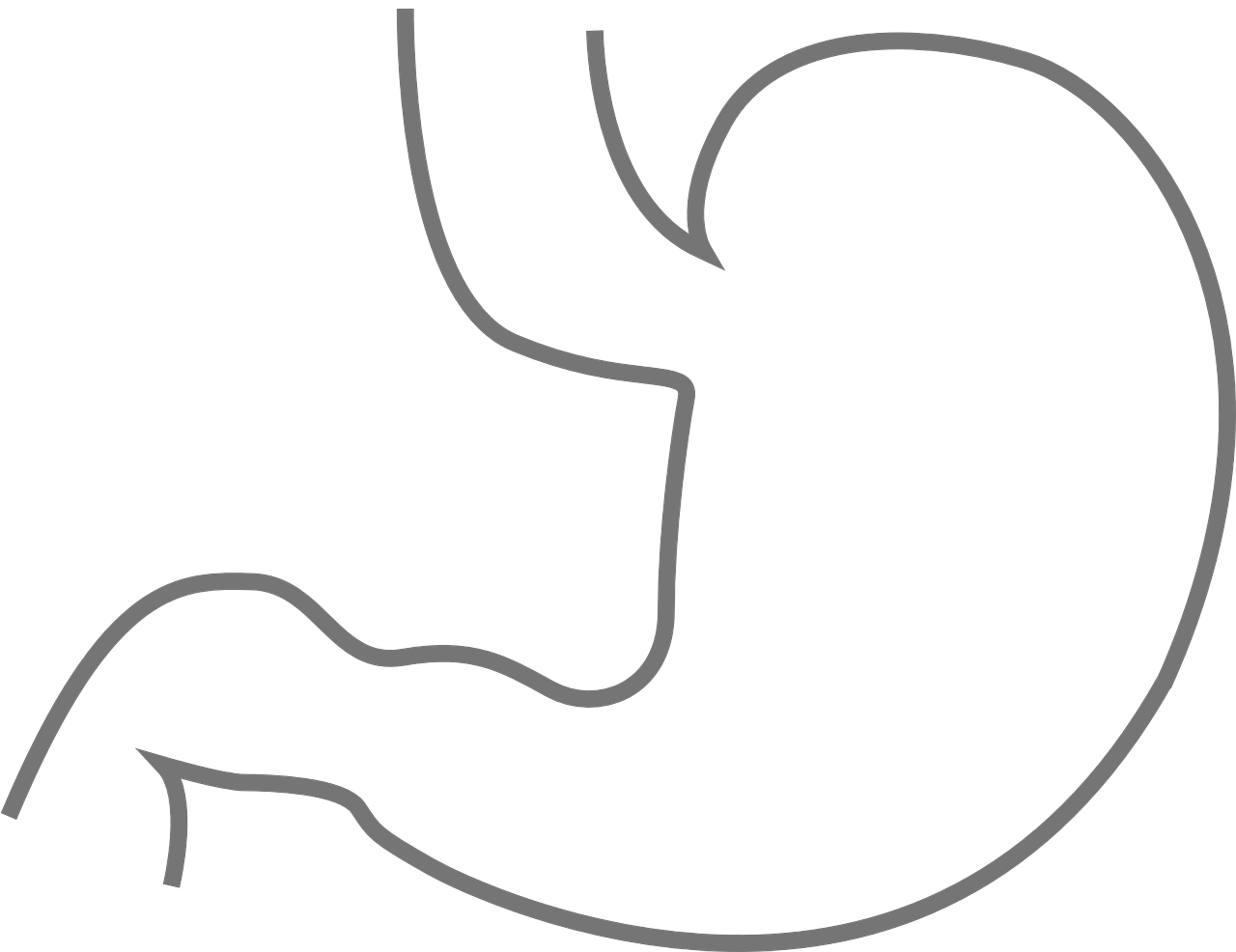
Incorporating Fiber-Rich Foods into Your Diet
Now that we understand the significance of dietary fiber, let’s explore how you can incorporate more fiber-rich foods into your daily meals:
Now that we understand the significance of dietary fiber, let’s delve into the exciting world of fiber-rich foods and discover how you can easily incorporate them into your daily meals. These foods not only promote digestive health but also offer a multitude of other health benefits, from helping to manage weight to lowering the risk of chronic diseases. Here are some practical tips to make fiber a regular part of your diet:
Start with Breakfast: Kickstart your day with a fiber-rich breakfast. Choose whole-grain cereals or oats, topped with fresh fruits like berries or sliced bananas. You can also add a sprinkle of nuts or seeds for an extra boost of fiber, flavor and crunch.
Embrace Whole Grains: Swap out refined grains for whole grains in your meals. Opt for whole wheat pasta, brown rice, quinoa or whole-grain bread for sandwiches. These grains are packed with fiber, which can help keep you feeling full and satisfied.
Snack Smart: Make your snacks count by choosing fiber-rich options. Snack on fresh veggies like carrots, cucumbers or bell peppers with hummus or a yogurt-based dip. Fresh fruits like apples or pears are also excellent portable snacks.
Beans and Legumes: Beans, lentils and chickpeas are fiber powerhouses. Add them to soups, stews, salads or even make a delicious bean-based chili. They’re not only high in fiber but also a great source of protein.
Include More Vegetables: Aim to fill half your plate with vegetables at lunch and dinner. Spinach, broccoli, kale and Brussels sprouts are excellent choices. You can steam, roast, sauté or stir-fry them to add variety to your meals.
Fruit-Filled Desserts: Satisfy your sweet tooth with fruit-filled desserts. Bake apples with a sprinkle of cinnamon or try a fruit salad with a drizzle of honey and a handful of chopped nuts for a nutritious and delicious treat.
Smooth Operators: Blend fruits and vegetables into smoothies. Adding spinach, kale or avocado to your morning smoothie is a great way to sneak in extra fiber without compromising on taste.
Salad Sensations: Experiment with salads by incorporating a variety of vegetables, legumes, nuts and seeds. Toss in some quinoa or brown rice for an extra fiber punch.
Read Labels: When shopping, read food labels to check for the fiber content of packaged foods. Choose products with higher fiber content and fewer refined ingredients.
Hydrate Adequately: Remember that increasing fiber intake should go hand-in-hand with staying well-hydrated. Drinking plenty of water helps fiber do its job effectively and keeps your digestive system running smoothly.
By gradually introducing these fiber-rich foods into your daily meals, you’ll not only enhance your digestive health but also enjoy the numerous health benefits that come with a high-fiber diet. Over time, you’ll likely find that these additions not only improve your physical well-being but also add a delightful array of flavors, textures and colors to your culinary repertoire.
You can also read more about this here: Boost Your Gut Health with Delicious Recipes Using Magimix …
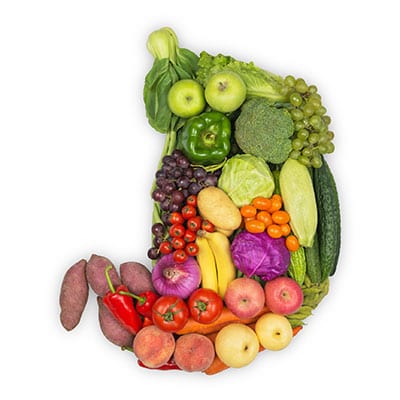
Whole Grains
Opt for whole grains like brown rice, quinoa, whole wheat pasta and oatmeal instead of refined grains.
Opt for whole grains like brown rice, quinoa, whole wheat pasta and oatmeal instead of refined grains. Making this dietary shift can have a profound impact on your health and well-being. Here are several reasons why choosing whole grains is a wise and wholesome choice:
Nutrient Density: Whole grains are rich in essential nutrients like fiber, vitamins, minerals and antioxidants. They provide a broader spectrum of health-promoting compounds compared to refined grains, which have had the bran and germ removed during processing. This nutrient density translates to improved overall health, better digestion and enhanced immune function.
Sustained Energy: Whole grains are a steady source of complex carbohydrates. They release energy gradually, helping to maintain stable blood sugar levels and preventing energy crashes. This sustained energy is especially beneficial for those seeking to maintain a productive and active lifestyle.
Digestive Health: The fiber content in whole grains aids in digestion and supports a healthy gut. It promotes regular bowel movements, reduces the risk of constipation and fosters a thriving gut microbiome, which has been linked to various aspects of health, including immunity and mental well-being.
Heart Health: Whole grains are associated with a reduced risk of heart disease. Their fiber content helps lower cholesterol levels, while other compounds like magnesium and potassium support healthy blood pressure. These factors collectively contribute to a heart-protective diet.
Weight Management: The satiating properties of fiber in whole grains can help with weight management. They keep you feeling fuller for longer, reducing the likelihood of overeating and supporting healthy weight maintenance.
Reduced Risk of Chronic Diseases: Whole grain consumption has been linked to a lower risk of chronic diseases such as type 2 diabetes, certain cancers and even stroke. The antioxidants and anti-inflammatory compounds found in whole grains play a role in this protective effect.
Versatility: Whole grains are incredibly versatile and can be incorporated into a wide variety of dishes. From savory to sweet, they can serve as a base for salads, stir-fries, soups, breakfast porridge and even desserts. Their adaptability makes it easy to include them in your daily meals.
Environmental Benefits: Choosing whole grains over refined grains can also have positive environmental implications. Whole grains typically require less processing, leading to a smaller carbon footprint and reduced energy consumption during production.
Incorporating whole grains into your diet isn’t just a dietary preference; it’s a choice that supports your long-term health and well-being. Whether you’re enjoying the nutty flavor of brown rice, the hearty texture of quinoa or the comforting warmth of oatmeal, you’re making a nutritious decision that nourishes your body and contributes to a healthier, more sustainable future. So, the next time you’re at the grocery store or planning your meals, remember the wholesome benefits of whole grains and savor the positive impact they can have on your life.
To delve further into this matter, we encourage you to check out the additional resources provided here: How Fiber is Key to a Healthy Diet | Resource | Baptist Health South …

Fruits and Vegetables
Consume a variety of fruits and vegetables daily, aiming for at least five servings. Include the skins whenever possible, as they often contain the most fiber.
Diversifying your fruit and vegetable intake is a powerful way to fuel your body with essential nutrients and promote overall health. Here’s why incorporating a rainbow of produce into your daily diet, along with their skins when appropriate, is such a wise choice:
Nutrient Synergy: Different fruits and vegetables offer a wide array of vitamins, minerals, antioxidants and phytonutrients. By consuming a variety, you harness the power of nutrient synergy. This means that the combination of nutrients in whole foods can have a more significant impact on health than isolated nutrients, supporting your body’s complex needs.
Fiber for Digestive Health: Fiber, found abundantly in fruits and vegetables, is crucial for digestive health. It aids in regular bowel movements, prevents constipation and supports a healthy gut microbiome. Consuming the skins of certain fruits and vegetables, like apples and potatoes, can boost your fiber intake, promoting digestive regularity.
Weight Management: Filling up on a colorful array of fruits and vegetables can help with weight management. They are low in calories but high in fiber, which helps you feel full and satisfied, reducing the likelihood of overeating or snacking on less nutritious options.
Disease Prevention: Research consistently shows that diets rich in fruits and vegetables are associated with a reduced risk of chronic diseases, including heart disease, diabetes and certain cancers. The diverse phytonutrients and antioxidants in these foods have protective effects on cellular health.
Skin Health: Many fruits and vegetables are rich in vitamins, like vitamin C and vitamin A, which are beneficial for skin health. Including a variety in your diet can contribute to a vibrant complexion and a reduction in skin-related issues.
Hydration: Fruits and vegetables have high water content, contributing to your daily hydration needs. Staying well-hydrated supports various bodily functions, from temperature regulation to cognitive performance.
Flavor and Culinary Versatility: A diverse range of fruits and vegetables adds excitement and flavor to your meals. Experimenting with different produce can transform ordinary dishes into culinary delights. From savory to sweet, there’s a fruit or vegetable to enhance any meal.
Environmental Impact: Supporting a variety of fruits and vegetables also extends to supporting sustainable and local agriculture. By diversifying your produce choices, you can contribute to a more resilient and eco-friendly food system.
Incorporating a spectrum of fruits and vegetables into your daily meals, while including the skins when appropriate, is a simple yet effective strategy for maintaining your overall well-being. Embrace the rich tapestry of flavors and nutrients that nature provides and savor the benefits of a diet that nourishes your body and supports a long and healthy life.
Don’t stop here; you can continue your exploration by following this link for more details: Improve Your Digestive Health – MD365®

Legumes
Beans, lentils and peas are excellent sources of fiber and can be added to soups, salads and main dishes.
Beans, lentils and peas are not only versatile ingredients in the kitchen but also nutritional powerhouses that can enhance the healthfulness of your meals in several ways.
Fiber-Rich Goodness: These legumes are brimming with dietary fiber, which is essential for digestive health. Fiber helps regulate bowel movements, prevents constipation and supports a feeling of fullness, making it an excellent ally for those looking to manage their weight. It also plays a crucial role in maintaining stable blood sugar levels, which can be particularly beneficial for individuals with diabetes.
Heart-Healthy Benefits: Incorporating beans, lentils and peas into your diet can contribute to heart health. Their fiber content helps lower cholesterol levels, reducing the risk of heart disease. Additionally, they contain potassium, a mineral that aids in regulating blood pressure, promoting cardiovascular well-being.
Plant-Based Protein: These legumes are fantastic sources of plant-based protein, making them a valuable addition to vegetarian and vegan diets. Protein is essential for muscle repair and growth and including legumes in your meals can help ensure you meet your protein needs while benefiting from their fiber content.
Nutrient Density: Beans, lentils and peas are packed with vitamins and minerals, including folate, potassium, iron and magnesium. These nutrients play vital roles in various bodily functions, such as red blood cell production, nerve function and bone health. By incorporating legumes into your meals, you can enhance the nutrient density of your diet.
Versatile Culinary Companions: These legumes are incredibly versatile and can be used in a wide range of dishes. Add them to soups and stews for a hearty texture, toss them into salads for extra protein and fiber or use them as the main ingredient in vegetarian or vegan dishes. Their adaptability in the kitchen makes it easy to enjoy their health benefits in various culinary creations.
Sustainable Nutrition: Legumes are also environmentally friendly as they require less water and produce fewer greenhouse gas emissions compared to animal-based protein sources. Choosing beans, lentils and peas as a protein source can align with sustainability goals and reduce your carbon footprint.
Incorporating beans, lentils and peas into your meals can be a delicious way to improve your overall dietary intake. Whether you’re looking to boost fiber, increase plant-based protein or simply enjoy their delightful flavors and textures, these legumes have a rightful place in a balanced and healthful diet.
If you’d like to dive deeper into this subject, there’s more to discover on this page: Improve Your Digestive Health – MD365®
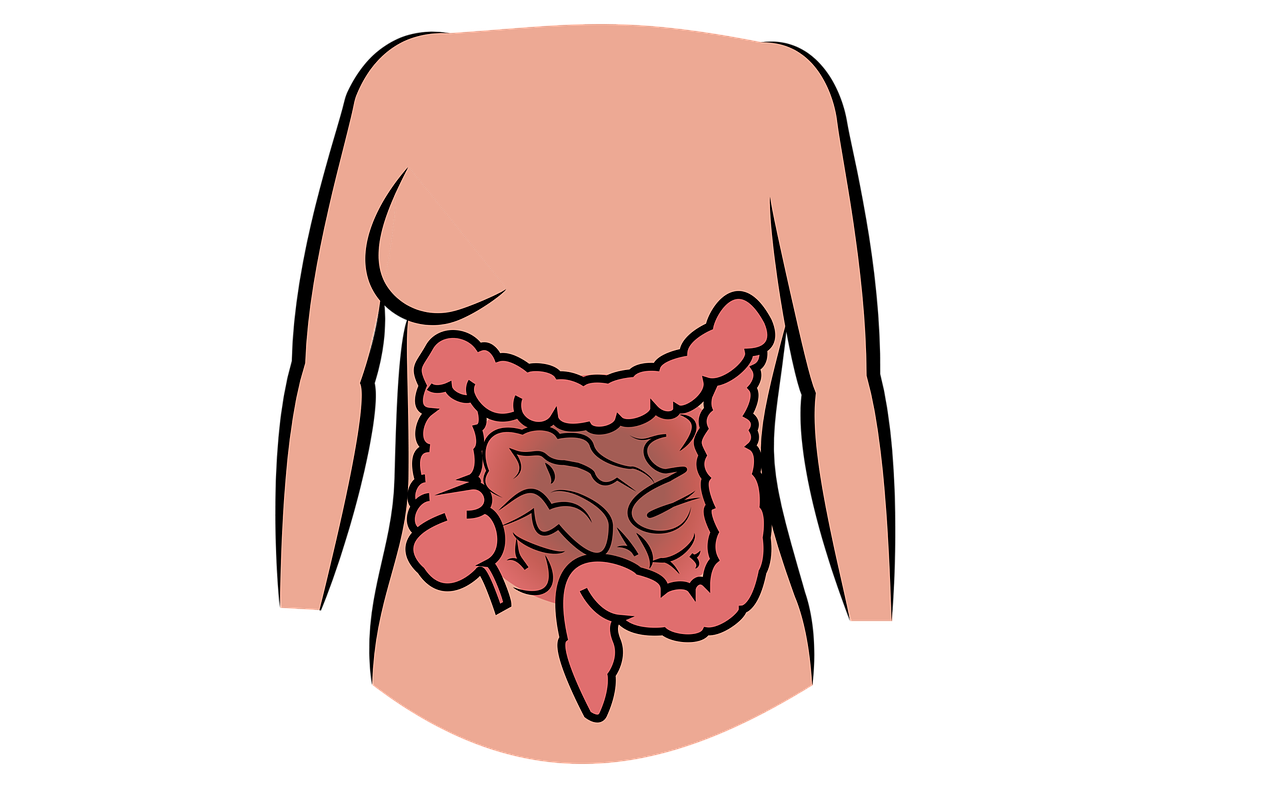
Nuts and Seeds
Almonds, chia seeds, flaxseeds and walnuts are fiber-rich additions to your diet. They also provide healthy fats and protein.
Almonds, chia seeds, flaxseeds and walnuts are not only fiber-rich additions to your diet but also nutritional powerhouses that offer a multitude of health benefits. These foods are not just about boosting your fiber intake; they provide a combination of healthy fats and protein, making them a valuable asset to your overall well-being.
1. Healthy Fats for Heart Health:
While the word “fat” may have a negative connotation, the fats found in almonds, chia seeds, flaxseeds and walnuts are heart-healthy. They are primarily unsaturated fats, including monounsaturated and polyunsaturated fats, which have been linked to a reduced risk of heart disease. These healthy fats can help lower LDL (bad) cholesterol levels and promote cardiovascular health.
2. Omega-3 Fatty Acids for Brain and Joint Health:
Chia seeds and flaxseeds are particularly rich sources of omega-3 fatty acids, specifically alpha-linolenic acid (ALA). Omega-3s play a crucial role in maintaining brain health, supporting cognitive function and reducing the risk of neurodegenerative diseases. Additionally, these fatty acids have anti-inflammatory properties that can benefit joint health and reduce the risk of chronic inflammatory conditions.
3. Plant-Based Protein for Muscle Health:
Almonds, chia seeds, flaxseeds and walnuts offer a plant-based source of protein, making them an excellent choice for vegetarians and vegans. While they may not provide as much protein as animal-based sources, incorporating these foods into your diet can contribute to your daily protein intake. Protein is essential for muscle repair, growth and overall body function.
4. Fiber for Digestive Health and Satiety:
As previously mentioned, these foods are rich in fiber, which is crucial for maintaining a healthy digestive system. Fiber promotes regular bowel movements, prevents constipation and supports a well-functioning gut. Additionally, the combination of fiber, healthy fats and protein in these foods can help you feel full and satisfied, making them a valuable addition to your diet if you’re looking to manage your appetite and weight.
5. Nutrient Density for Overall Wellness:
In addition to fiber, healthy fats and protein, these foods are packed with essential vitamins, minerals and antioxidants. Almonds, for example, are an excellent source of vitamin E and magnesium. Chia seeds are rich in calcium and manganese. Flaxseeds provide a healthy dose of thiamine (vitamin B1) and lignans, which have antioxidant properties. Walnuts are known for their omega-3 content and offer a range of vitamins and minerals, including copper and manganese.
6. Versatile Culinary Additions:
These fiber-rich foods are incredibly versatile in the kitchen. You can sprinkle chopped nuts or seeds on your morning yogurt, add them to smoothies, incorporate them into oatmeal or cereal, use them as a topping for salads or include them in homemade energy bars. The possibilities are endless, allowing you to enjoy their nutritional benefits in a variety of ways.
Incorporating almonds, chia seeds, flaxseeds and walnuts into your diet not only enhances your fiber intake but also provides a wealth of nutrients that support your overall health. So, whether you’re looking to boost your heart health, nourish your brain or simply enjoy a tasty and nutritious snack, these foods offer a delicious and wholesome way to elevate your well-being.
You can also read more about this here: Can Fiber Assist in Preventing Gastroparesis? | GI Associates

High-Fiber Cereals
Choose cereals with whole grains and high fiber content for a nutritious breakfast option.
When selecting cereals for a nutritious breakfast, opting for those with whole grains and high fiber content is a smart choice that offers a multitude of health benefits. Here’s why this selection is an excellent addition to your morning routine:
Whole Grains for Sustained Energy: Cereals made from whole grains provide a steady and sustained release of energy throughout the morning. They contain complex carbohydrates that are slowly digested, helping to stabilize blood sugar levels and keep you feeling full longer. This sustained energy can improve your focus and productivity throughout the day.
Fiber for Digestive Health: High-fiber cereals support digestive health by promoting regular bowel movements and preventing constipation. Fiber also acts as a prebiotic, nourishing the beneficial bacteria in your gut, which can have a positive impact on your overall well-being.
Heart Health: Cereals with whole grains and high fiber content are heart-healthy choices. They can help lower cholesterol levels and reduce the risk of heart disease. The soluble fiber found in these cereals binds to cholesterol and removes it from the body, contributing to a healthier cardiovascular system.
Weight Management: Choosing cereals rich in whole grains and fiber can aid in weight management. The satiety provided by fiber helps control hunger and reduces the likelihood of overeating later in the day. It can also assist in maintaining a healthy weight by promoting a feeling of fullness.
Nutrient Density: Many high-fiber cereals are fortified with essential vitamins and minerals, providing a nutrient-dense start to your day. Look for options that offer added vitamins like B vitamins and minerals like iron, which are important for energy production and overall health.
Lower Sugar Intake: Whole-grain, high-fiber cereals often contain less added sugar compared to their sugary counterparts. This makes them a more nutritious and balanced choice for breakfast, as excessive sugar intake can lead to energy spikes and crashes.
Versatility: Cereals with whole grains and high fiber content are versatile breakfast options. You can customize them with toppings like fresh fruits, nuts and yogurt for added flavor and nutrition. This flexibility allows you to tailor your breakfast to your taste preferences and dietary needs.
Digestive Comfort: The fiber in these cereals promotes a healthy gut microbiome, which can reduce the risk of gastrointestinal issues like bloating and discomfort. This can lead to improved overall digestive comfort.
Incorporating cereals with whole grains and high fiber content into your breakfast routine is a small but significant step towards improving your overall health. It’s a delicious and convenient way to provide your body with the essential nutrients it needs to thrive throughout the day, setting a positive tone for your overall dietary choices. So, start your mornings right by choosing cereals that prioritize whole grains and fiber for a wholesome and nutritious breakfast experience.
For additional details, consider exploring the related content available here The prevention and control the type-2 diabetes by changing lifestyle …
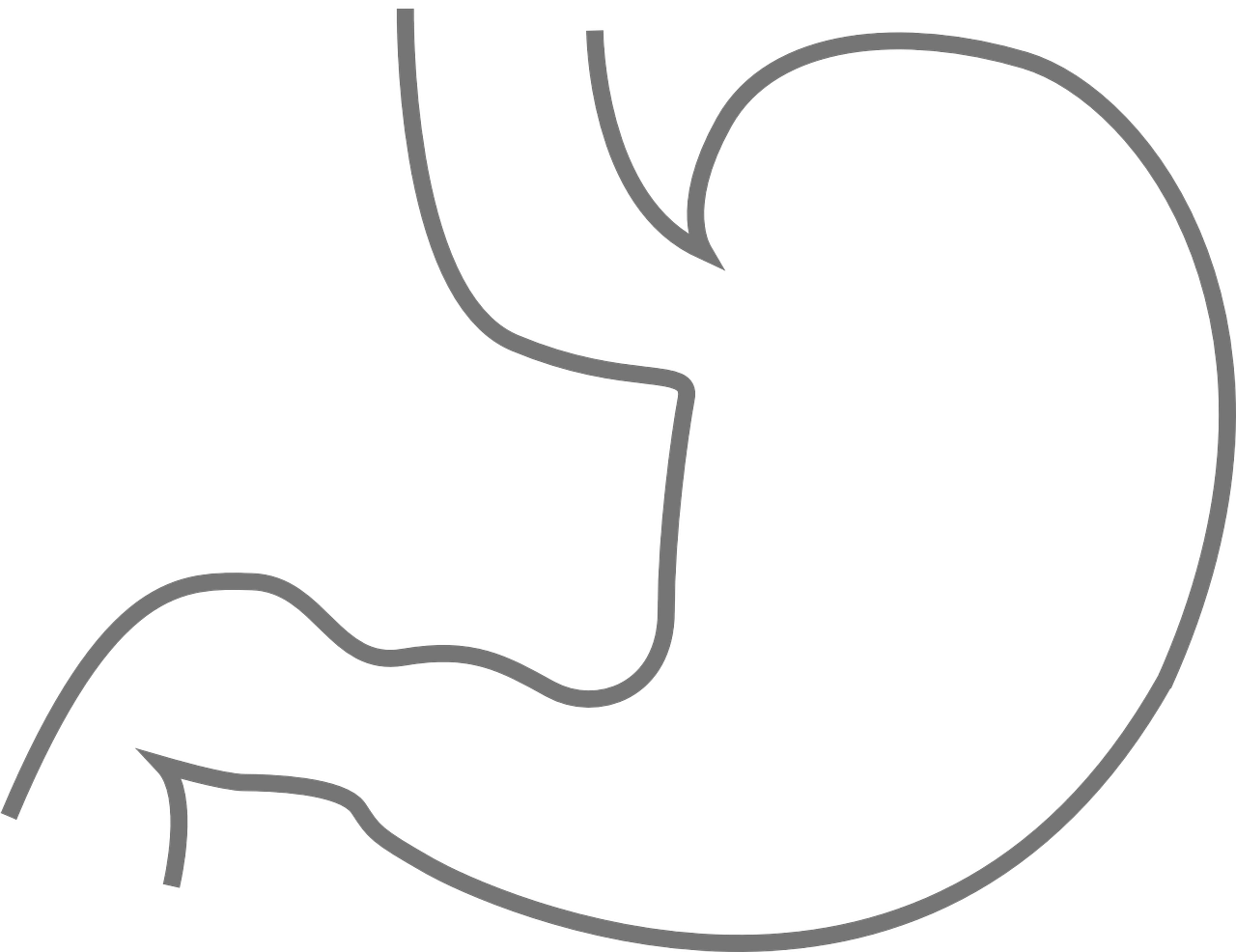
Smoothies
Blend fruits and vegetables into smoothies and consider adding a scoop of fiber-rich bran or chia seeds for an extra boost.
Creating nutrient-packed smoothies is a delicious and convenient way to fuel your body with essential vitamins, minerals and fiber. Here’s an extended idea to help you make the most of your smoothie creations:
Variety is Key: Don’t limit yourself to just one or two ingredients. Experiment with a wide range of fruits and vegetables to maximize the nutritional diversity of your smoothies. Berries, bananas, spinach, kale, carrots and avocados are just a few options to consider. Each adds its unique set of vitamins and minerals.
Balance Sweetness and Nutrition: While fruits like berries and bananas can add natural sweetness to your smoothie, don’t forget about the less sweet but equally nutritious options like leafy greens and cucumbers. This balance not only enhances the flavor but also keeps your smoothie low in added sugars.
Protein Power: To make your smoothie a satisfying meal or snack, incorporate a source of protein. Greek yogurt, almond butter, tofu or protein powder are excellent choices. Protein not only helps with satiety but also supports muscle repair and growth.
Healthy Fats: Add a dose of healthy fats with ingredients like avocado, flaxseeds or a spoonful of nut butter. These fats are essential for overall health, aid in nutrient absorption and provide a creamy texture to your smoothie.
Fiber-Rich Additions: Besides bran and chia seeds, you can include oats, psyllium husk or ground flaxseeds to boost the fiber content. Fiber promotes digestive health, helps maintain steady blood sugar levels and keeps you feeling full longer.
Liquid Choices: Choose your liquid base wisely. Water is the most hydrating option, but you can also use unsweetened almond milk, coconut water or low-fat dairy milk for added creaminess and flavor. Be mindful of portion sizes to control calorie intake.
Spice it Up: Experiment with spices like cinnamon, ginger or turmeric to enhance the flavor and health benefits of your smoothie. These spices can provide a unique twist while offering anti-inflammatory properties.
Green Superfoods: Consider adding a scoop of green superfood powder, such as spirulina or wheatgrass, for an extra nutritional punch. These supplements are packed with antioxidants, vitamins and minerals.
Stay Hydrated: Remember that smoothies can be hydrating, but they shouldn’t replace your daily water intake. Continue to drink plenty of water throughout the day to stay properly hydrated.
Prep in Advance: Save time by prepping smoothie ingredients in advance. Portion out fruits and vegetables into individual freezer bags, so you can quickly blend a nutritious smoothie even on busy mornings.
By embracing these tips, your smoothie-making routine can become a delightful and nutritious culinary adventure. Whether you’re aiming for a quick breakfast, post-workout refuel or a healthy snack, your homemade smoothies can be customized to suit your taste and nutritional needs, all while providing an enjoyable way to nourish your body.
Additionally, you can find further information on this topic by visiting this page: Healthy Warming Spice Smoothie | Nutrition Stripped
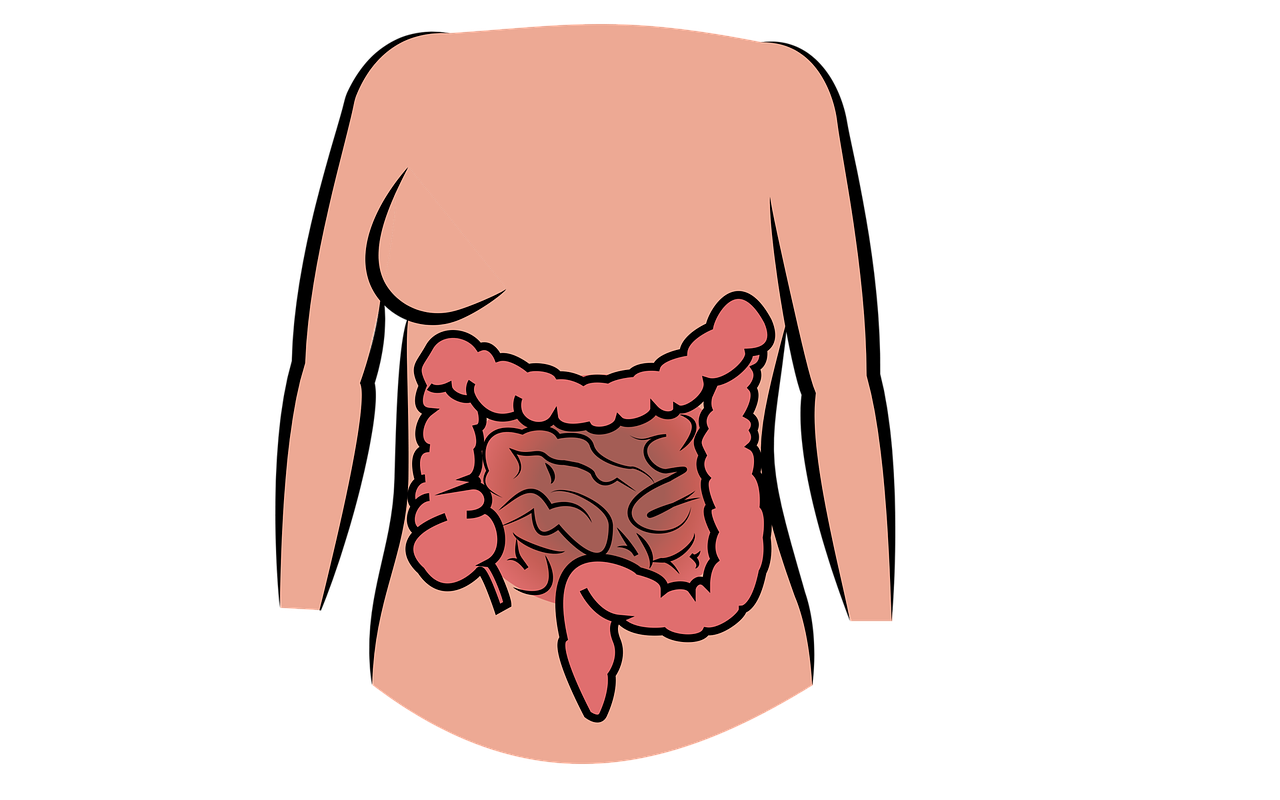
Read Food Labels
When shopping, check food labels for the fiber content and opt for products with higher fiber content.
Smart Shopping: Harnessing the Power of Fiber at the Grocery Store
Navigating the aisles of a grocery store with an eye on fiber content is a savvy strategy that can have a profound impact on your overall health and well-being. Here’s how you can make the most of your shopping experience by prioritizing fiber-rich products:
Label Literacy: Take a moment to read food labels on packaged products. Look for the “Dietary Fiber” section, which typically appears under the “Nutrition Facts” heading. The amount of fiber in the product will be listed in grams. Aim for products with higher fiber content per serving.
Whole Grain Wonders: When shopping for grains like bread, pasta, rice and cereal, opt for whole grain or whole wheat varieties. These options are typically richer in fiber compared to their refined counterparts, providing more nutritional value in each bite.
Fruitful Choices: In the produce section, prioritize fresh fruits and vegetables. They are naturally high in fiber and offer a wide range of health benefits. Don’t forget to explore different varieties to keep your meals interesting and nutritious.
Legume Love: Include legumes like beans, lentils and chickpeas in your shopping list. Canned or dried, these versatile legumes are excellent sources of fiber and plant-based protein. They can be incorporated into various dishes, from soups to salads.
Nutty Business: Nuts and seeds are not only packed with healthy fats but also fiber. Almonds, walnuts, chia seeds and flaxseeds are great choices to sprinkle on yogurt, oatmeal or salads, boosting your fiber intake effortlessly.
Cereal Selection: If you enjoy cereal for breakfast, opt for options that are high in fiber and low in added sugars. A bowl of whole grain cereal with fresh fruit is a quick and nutritious way to start your day.
Snack Smarts: When picking snacks, reach for options that provide a fiber punch. Whole grain crackers, air-popped popcorn and vegetable sticks with hummus are excellent choices for satisfying your snack cravings while boosting fiber intake.
Fiber-Rich Beverages: Some beverages, like certain teas and fruit juices, may contain added fiber. While it’s essential to drink plenty of water, these fiber-infused beverages can be a tasty and hydrating way to supplement your fiber intake.
Plan and Prepare: Prioritize meal planning and preparation to ensure you have fiber-rich ingredients on hand. Having a well-stocked pantry and fridge with high-fiber staples makes it easier to incorporate fiber into your daily meals.
Variety Matters: Aim for a diverse range of fiber sources. Different foods offer different types of fiber, so by diversifying your diet, you’ll benefit from a broader spectrum of nutrients and health advantages.
By conscientiously checking food labels for fiber content and making fiber-rich choices during your grocery shopping trips, you’re not only making an investment in your health but also taking a proactive step toward a balanced diet. Fiber plays a pivotal role in digestive health, blood sugar regulation and overall well-being. So, let your grocery cart be a reflection of your commitment to a healthier, more fiber-rich lifestyle, one nourishing choice at a time.
Don’t stop here; you can continue your exploration by following this link for more details: Nutritional Recommendations for Individuals with Diabetes …
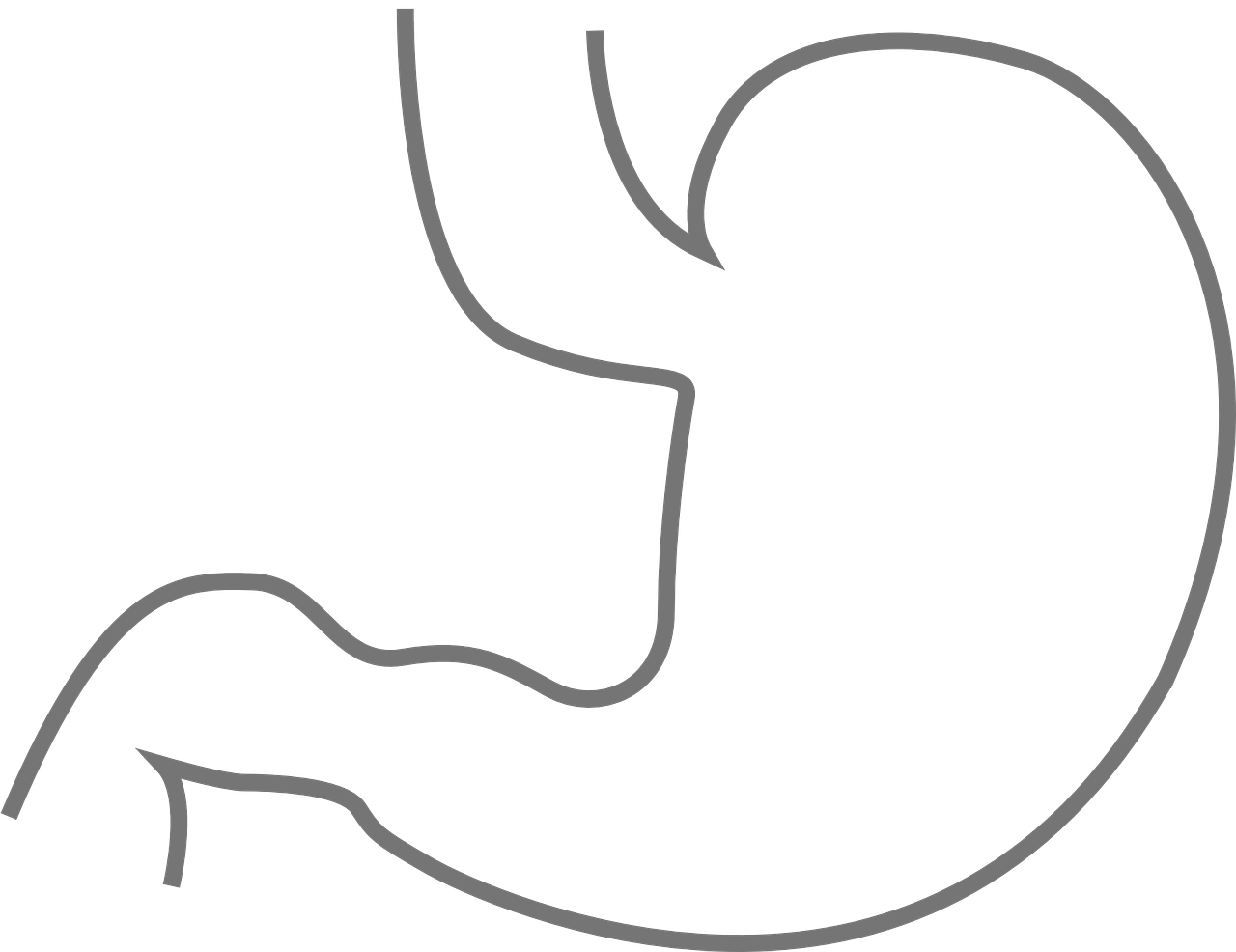
Stay Hydrated
Ensure you drink plenty of water when increasing your fiber intake, as it helps fiber move smoothly through the digestive tract.
Ensuring an ample water intake is essential when boosting your fiber consumption. Water acts as a facilitator, aiding fiber in its smooth journey through the digestive tract. Ample hydration supports optimal digestive function, preventing discomfort and promoting overall gastrointestinal health. So, alongside incorporating fiber-rich foods into your diet, remember to prioritize hydration for a well-rounded approach to digestive wellness.
Should you desire more in-depth information, it’s available for your perusal on this page: Tips for a Healthy Digestive System – Vanguard Gastroenterology

In conclusion, fiber-rich foods are the cornerstone of a healthy digestive system. Their myriad benefits extend beyond digestion to encompass heart health, weight management and blood sugar control. By prioritizing fiber-rich foods in your diet, you not only support your digestive system but also lay the foundation for overall well-being and vitality. So, the next time you plan your meals, remember that dietary fiber is your ally in maintaining a robust and efficient digestive system, ensuring you feel your best every day.
In summary, the significance of fiber-rich foods cannot be overstated when it comes to promoting a thriving digestive system. These foods, brimming with essential dietary fiber, do more than just aid in digestion; they form the bedrock of a holistic approach to well-being that extends to various aspects of your health.
Heart Health: It’s not just your digestive tract that benefits from dietary fiber. Incorporating fiber-rich foods into your diet can have a profound impact on your heart’s health. Fiber helps lower cholesterol levels, particularly the LDL (low-density lipoprotein) cholesterol often referred to as “bad” cholesterol. By doing so, it reduces the risk of atherosclerosis and heart disease, ensuring that your cardiovascular system stays in top form.
Weight Management: If you’re on a journey to manage your weight, fiber-rich foods are your allies. They offer a sense of fullness and satisfaction, which can help curb overeating and snacking between meals. Additionally, high-fiber foods often have fewer calories relative to their volume, making them a valuable component of a weight-conscious diet.
Blood Sugar Control: Maintaining stable blood sugar levels is crucial for overall health, particularly for individuals with diabetes or those at risk of developing it. Fiber-rich foods slow the absorption of sugar in the bloodstream, preventing rapid spikes and crashes in blood sugar levels. This helps in managing diabetes and reducing the risk of type 2 diabetes in some cases.
Gut Health: While we’ve emphasized digestion, it’s worth noting that dietary fiber is also instrumental in nurturing a healthy gut microbiome. Fiber serves as a prebiotic, fueling the growth of beneficial gut bacteria that play a pivotal role in immune function and overall wellness.
By placing fiber-rich foods at the forefront of your dietary choices, you’re not only supporting efficient digestion but also fortifying your body against a range of health challenges. The choices you make when planning your meals are a testament to your commitment to well-being and vitality.
So, as you prepare your daily menu, remember that dietary fiber is your steadfast companion on the path to robust health. It’s a small yet mighty addition to your plate that pays enormous dividends in terms of your digestive system, heart health, weight management and blood sugar control. Embrace the power of fiber-rich foods and you’ll find yourself feeling your best every day, nourished from the inside out.
You can also read more about this here: Food Healers on LinkedIn: #fiberbenefits #healthydigestion …
More links
Additionally, you can find further information on this topic by visiting this page: How adding salads can improve older adults’ health.
